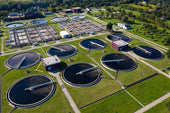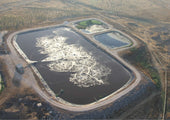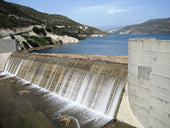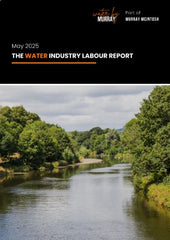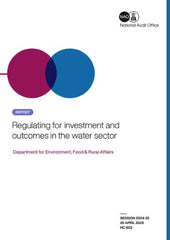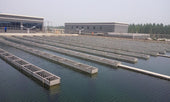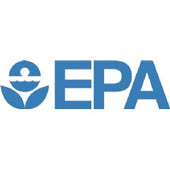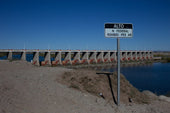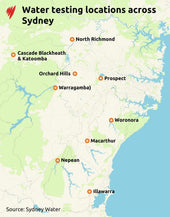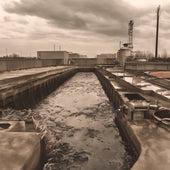
London’s £4.5bn super sewer achieves final connection after 9 years of construction
London’s £4.5bn Thames Tideway Tunnel, known colloquially as the “super sewer”, has been officially activated, marking a significant milestone in the efforts to reduce sewage pollution in the River Thames.
Tideway, the project developer, announced that the final connection between the existing Victorian sewer system and the new 25km tunnel has been completed.
The new infrastructure aims to combat the long-standing issues of sewage discharge into the Thames, which have been exacerbated by population growth and climate change. Previous rainfall events often overwhelmed the older sewer systems, leading to sewage spills. With the super sewer now operational, it is reported that 95% of these discharges have been prevented.
Throughout the construction phase, connections were established at several prominent London locations, including Putney Embankment – recognised as the starting point for the University Boat Race – Cheslea and Victoria Embankments, Blackfriars Bridge and King Edward Memorial Park in Wapping.
Since the initial connections were made last October, Tideway has released data indicating that over 5.5Mm3 of sewage, which is equivalent to approximately 2,200 Olympic-sized swimming pools, has been successfully diverted from entering the river.
The 25km tunnel integrates with the existing 6.9km Lee Tunnel in East London, creating a comprehensive sewage management system known as the London Tideway Tunnel (LTT). The initial phases of connecting the super sewer began in autumn 2024, when significant quantities of storm sewage were captured within just 24 hours during adverse weather. For instance, one incident in November resulted in the capture of approximately 848,000t of sewage in a 24 hour period.
Construction of the super sewer commenced in 2016, involving activities at 24 sites across London – from Acton in west London to Abbey Mills Pumping Station in the east. This extensive project included the creation of over 20 deep shafts, some of which are as wide as the dome of St Paul’s Cathedral.
These shafts were not only to divert sewage flows but also to enable the lowering of tunnel boring machines (TBMs) into the ground.
The first TBMs started work in 2018. The 25km main tunnel and the two smaller connection tunnel were all completed in spring 2022.
The completion of heavy civil engineering work came with the conclusion of all underground works in spring 2024.
The Tideway project is being delivered by an alliance of contractors:
- The west region is being delivered by a joint venture of Bam Nuttall, Morgan Sindall Infrastructure and Balfour Beatty
- The central region is being delivered by FLO, a joint venture of Ferrovial Agroman UK and Laing O’Rourke
- The east region is being delivered by a joint venture of Costain, Vinci Construction Grands Projets and Bachy Soletanche
With testing slated for completion later this year, Thames Water will take over the operation of the new system as part of its London wastewater network, with ongoing updates provided via a newly launched tracker on Tideway’s website. The successful activation of this expansive tunnelling project signals a healthier future for the River Thames and London’s overall sewage management capabilities.
Tideway CEO Andy Mitchell said: “This is another significant step forward – with this final connection complete, the super sewer is fully up and running and protecting the Thames. Our next step is to test it in storm conditions – which is why we are keeping a close eye on the weather – and we will do this over the coming months.
“We are at the start of a new chapter for London and its river. Our mission has always been about creating not just a tunnel, but a healthier, thriving environment for the river and its inhabitants. We look forward to seeing a real impact in the years to come and sharing everything we learn about the positive changes.”
Environment Secretary Steve Reed said: “This Government is determined to clean up our polluted rivers, lakes and seas – and that includes the capital’s iconic Thames river.
“The Thames Tideway Tunnel is an example of the kind of infrastructure investment needed to clean up our waterways around the country and builds on this government’s wider ambition to boost national infrastructure under the Plan for Change.
“Just 70 days after the election, we introduced the Water (Special Measures) Bill to ban bonuses for failing firms and hold bosses criminally liable. We’ve also launched the largest water sector review since privatisation to boost investability into the sector and speed up the building of infrastructure.”
Mayor of London Sadiq Khan said: “This is an important milestone, which will mean a huge reduction in sewage going into the tidal Thames. We must now build on this work to go further and tackle the other sources of pollution damaging London’s waterways. I’m determined to make our rivers cleaner, safer and more accessible so that Londoners can enjoy the benefits of nature as we continue to build a greener and better city for all.”
Thames Water CEO Chris Weston said: “London’s Victorian sewer system was built for four million people but today, it serves over nine million. The final connection of the Thames Tideway Tunnel to our network is a major milestone in a three-stage programme to help London’s wastewater system cope with a growing population and the impact of climate change.
“This infrastructure project, funded by Thames Water customers, will reduce sewage discharges into the Thames and create lasting benefits for biodiversity, recreation and public health. We know there is still much more to do so our focus now turns to the next phase of our work to continue cleaning up London’s rivers and watercourses.”
Environment Agency chair Alan Lovell said: “Today marks a very important milestone for the wildlife and water quality of the Thames, as well as the people that live, visit and work in our capital city.
“As environmental regulator and advisor, the Environment Agency is proud to have worked collaboratively with partners on the delivery of the Tideway project every step of the way, from its conception to construction and ongoing regulation of sewage spills into the Thames estuary – which will be reduced by around 95% through the combined London Tideway Improvements.
“This project will markedly improve the river for wildlife and for the people around it. We will continue to monitor water quality and aquatic life in London’s iconic river as part of our robust regulation of the water industry.”
Ofwat chief executive David Black said: “This is an historic moment in the development of London’s infrastructure – and we are proud to have worked with partners on the development, oversight and delivery of this scheme. The project demonstrates how the use of competitive models for delivery and innovation in finance arrangements can achieve good outcomes for customers and the environment alike.
“As Tideway moves towards full completion, we are already planning for the future and creating the foundations for future economic growth. By optimising our innovative regulatory models, including learnings from Tideway’s financing structure, we will unlock investment for the next generation of major water and wastewater infrastructure projects.”
Like what you've read? To receive New Civil Engineer's daily and weekly newsletters click here.










